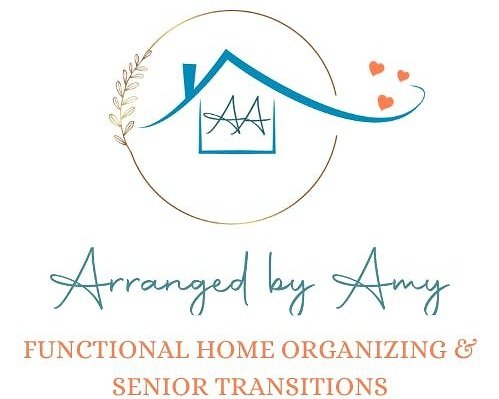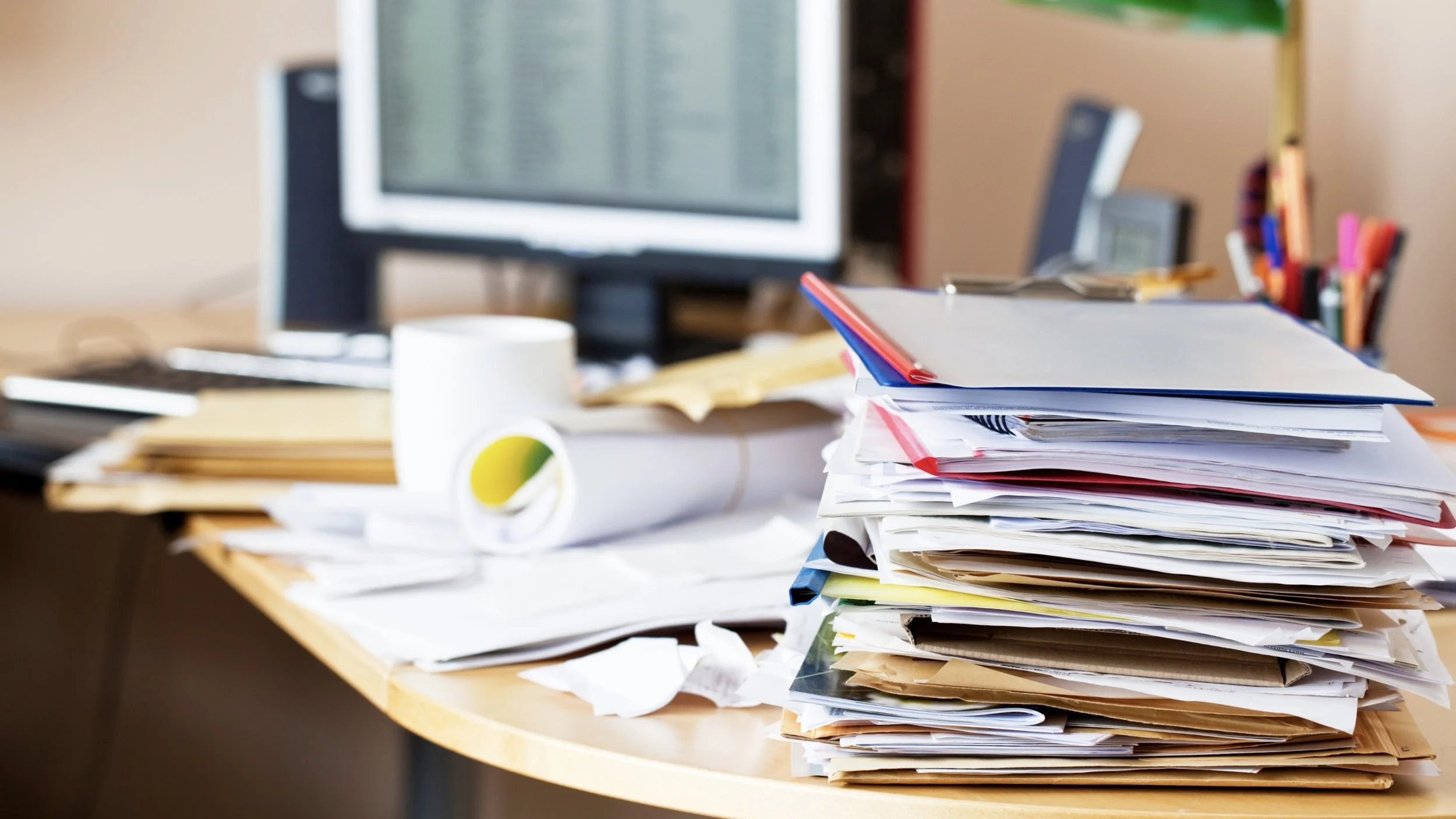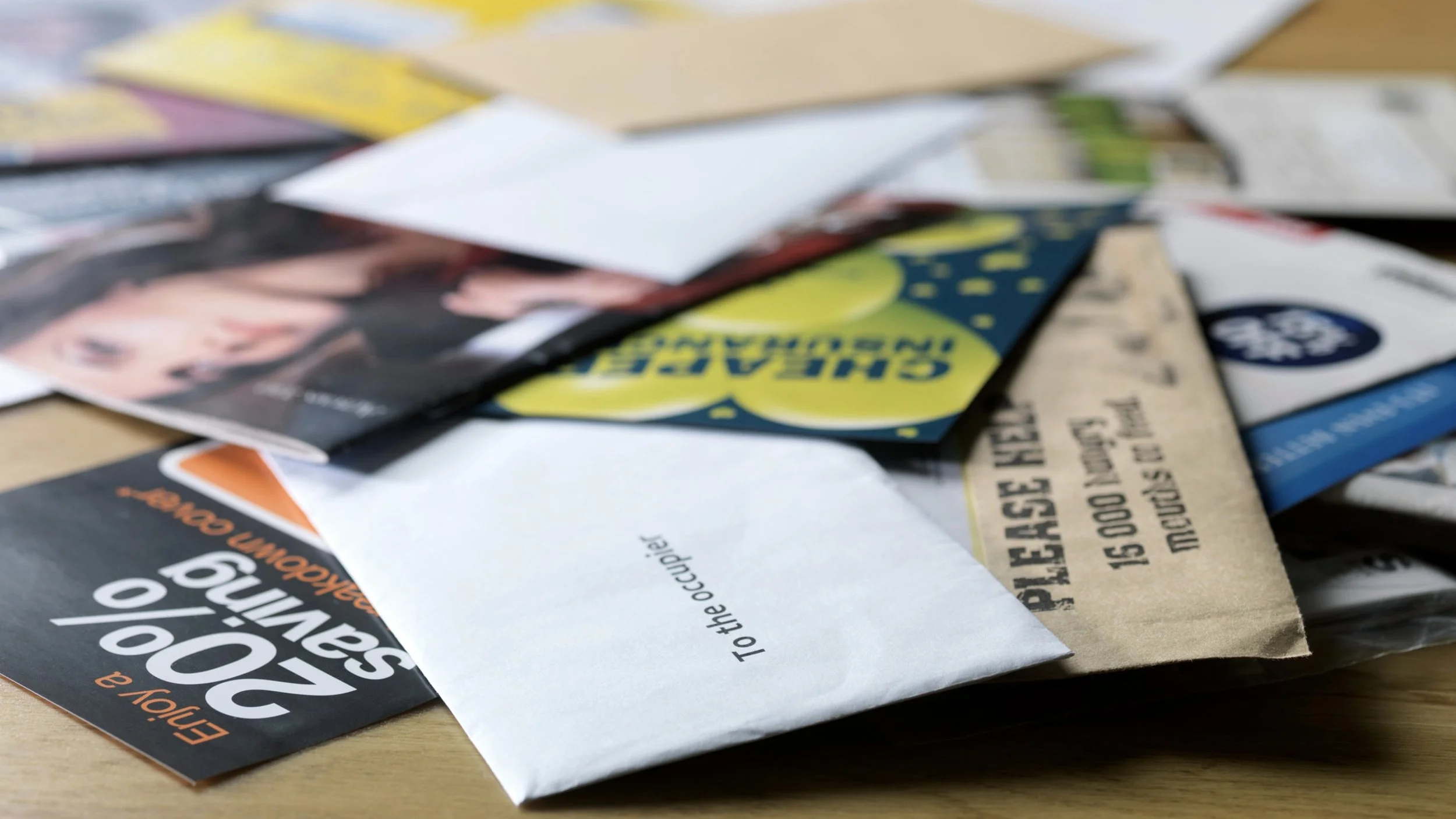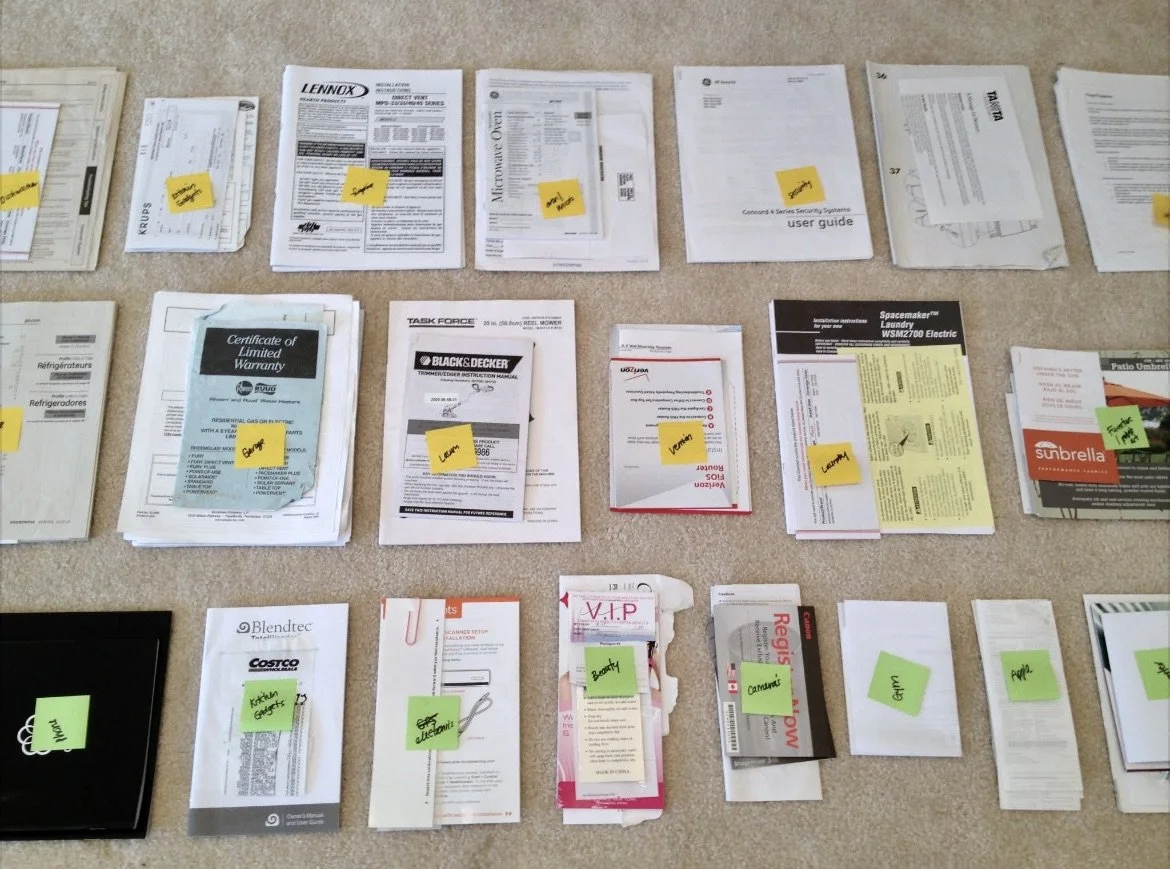Tackling Paper Clutter: How to Simplify, Sort, and Finally Feel in Control
Let’s be honest — paper clutter has a way of sneaking up on you. One day it’s a small stack of unopened mail on the counter, and before you know it, there are papers spilling out of drawers, covering the kitchen table, and tucked into every “temporary” spot around the house.
If you’re part of the sandwich generation — managing your own household while also helping your parents and adult kids with theirs — it can feel like you’re drowning in documents. Between your bills, your parents’ medical statements, and your kids’ college forms, it’s no wonder paper clutter can feel endless.
But here’s the good news: with a few simple systems and some clarity on what you actually need to keep, you can take control of the chaos.
Why Paper Clutter Feels So Overwhelming
Even in today’s digital world, paper still finds its way into our homes. Junk mail, receipts, insurance updates, school forms, tax documents — it all adds up fast. And when you’re juggling multiple generations’ worth of paperwork, the piles multiply.
Many of my clients feel ashamed or frustrated by their paper clutter, but there’s no reason to. Most of us were never taught how to manage it — especially in a world that’s half-digital and half-paper.
The first step is understanding why paper builds up:
Mail comes in daily — and if it’s not sorted right away, it becomes another pile.
Kids’ school papers keep flowing, and it’s hard to know what to save or toss.
Medical and financial records for parents or dependents stack up fast.
Sentimental items — cards, letters, ticket stubs — feel too special to part with.
Once you know where it’s coming from, you can put systems in place to prevent future overwhelm.
What to Keep (and for How Long)
Before you dive into decluttering, it’s important to know what’s worth saving. Not everything deserves a permanent home in your file cabinet!
Here’s a quick guide to what to definitely keep:
Tax Records – Keep W-2s, 1099s, receipts, and deductions for at least seven years.
Vehicle Paperwork – Hold onto your car title until you sell it, and keep your current insurance cards in the car (shred the expired ones).
Home Loan & Property Documents – Save all closing paperwork and deeds for as long as you own your home.
Investment Records – Keep purchase and sale confirmations while you own them, and statements for at least seven years.
Medical Records – Maintain vaccination records, surgery details, and important test results, even if they’re available online.
Recent Bank & Credit Card Statements – Keep for one year unless they document a major transaction.
Official Identifying Documents – Store original birth certificates, marriage licenses, and social security cards in a safe, accessible spot.
For a full breakdown of retention times, download my Paper Retention Cheat Sheet — it’s a handy reference to help you make confident decisions as you sort.
What You Can Let Go Of
Not every paper deserves a second thought. Here are a few things you can safely recycle or shred:
Outdated cards and expired documents (old insurance cards, credit cards, etc.)
Utility and phone bills once they’re paid and verified
Old bank and credit card statements over a year old (unless needed for tax or legal reasons)
Junk mail, catalogs, and flyers — they go straight to the recycling bin
You’ll be amazed how much physical (and mental) space you free up when you let go of papers that no longer serve a purpose.
My 5-Step Paper Decluttering System
When I work with clients — especially busy parents or those managing paperwork for multiple family members — I guide them through a simple, repeatable process. You can use it too:
1. Gather Everything in One Place
Pull papers from every corner of your home — kitchen counters, drawers, baskets, cars, and home offices. Seeing it all together can be eye-opening, but it helps you start fresh.
2. Sort Into Three Piles: Keep, Recycle, and Shred
Keep what’s essential or sentimental. Recycle what’s irrelevant. Shred anything with personal information (account numbers, SSNs, etc.). A cross-cut shredder or local shredding event is perfect for this.
3. Go Digital Wherever Possible
Opt into e-statements for your utilities, banks, and insurance companies. Scan or photograph documents you want to keep a record of, then file them digitally. Cloud platforms like Google Drive or Dropbox are great for this.
4. Create a Simple Filing System
Set up clearly labeled folders (physical or digital) so you can actually find what you need. You might label them by category (Taxes, Medical, Home) or by family member if you’re managing multiple sets of paperwork.
If you’re not sure how to structure your files, my Paper Clutter Kickstart Guide and Paper Declutter Checklist will walk you through the exact setup I use with clients.
5. Designate a Drop Zone
Paper will still come in — that’s just life. The key is to give it a home before it becomes a pile. Keep one small tray or bin in a central location for incoming mail and documents, then process it weekly.
The Emotional Side of Paper
Paper clutter isn’t just about piles — it’s often tied to emotions: guilt, fear of losing something important, or sentimental attachment. Especially for those of us balancing kids’ school papers and parents’ estate documents, it’s easy to feel like every sheet of paper holds significance.
Be gentle with yourself as you sort. You’re not just decluttering — you’re creating order out of years of life stories.
If you struggle with the “what if I need it” thought loop, lean on tools like the Paper Retention Cheat Sheet for clear, confident decisions.
Keep It Simple, Keep It Sustainable
Decluttering once feels amazing — but staying organized long-term requires small, consistent habits:
Sort incoming papers weekly.
Go paperless whenever possible.
Review your files once or twice a year.
With a system in place, you’ll spend less time hunting for paperwork and more time enjoying a calmer, more functional home.
Ready to Declutter Your Papers — for Good?
You don’t have to tackle it alone. I created the Paper Clutter Kickstart Bundle to make it easier to get started and stay organized.
👉 Download your free resources here and start turning those piles into peace of mind.
About the Author
Amy Smith, founder of Arranged by Amy Organizing, Based in Scarborough, Maine, she offers in-home organizing, unpacking, and photo preservation services that help clients simplify their surroundings and feel at home again.
Hi! I’m Amy, a professional organizer in Maine. I help busy families, downsizing seniors, and sandwich-generation caregivers create organized, functional homes through compassionate, judgment-free support. I take away the overwhelm and stress that having too much stuff can cause by working with you to help you release what no longer serves you and thoughtfully organize the items you want to keep in a way that functions for you and your family. I’ll even remove and drop off your donations, recyclables and trash.
Click here to schedule a complimentary phone consultation with me to talk about how I can help you feel stress-free and at peace in your home!





